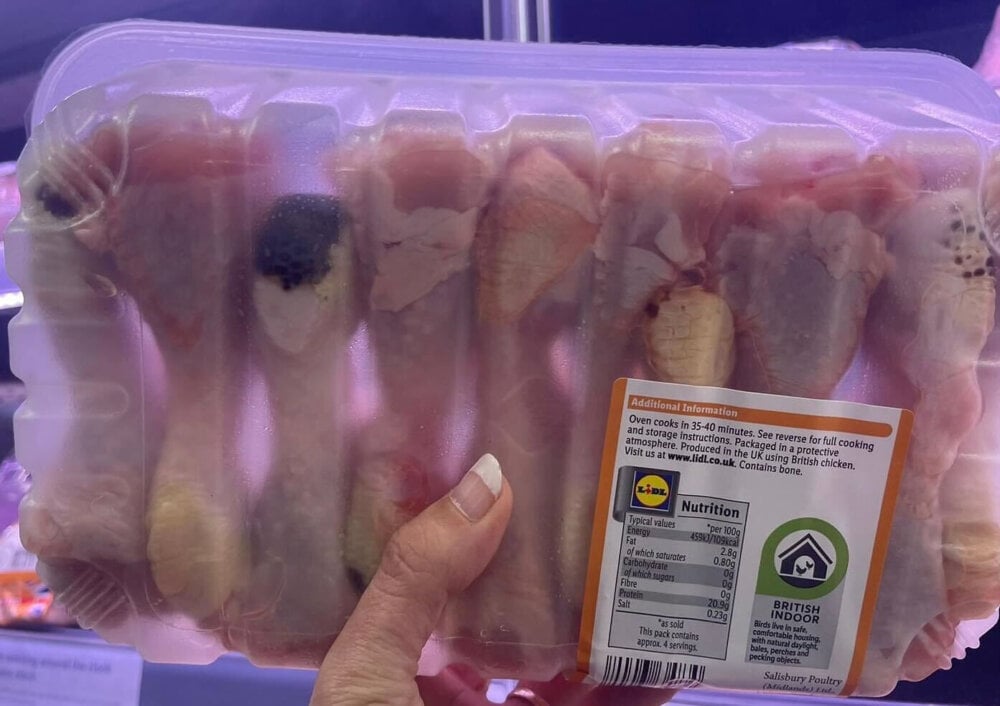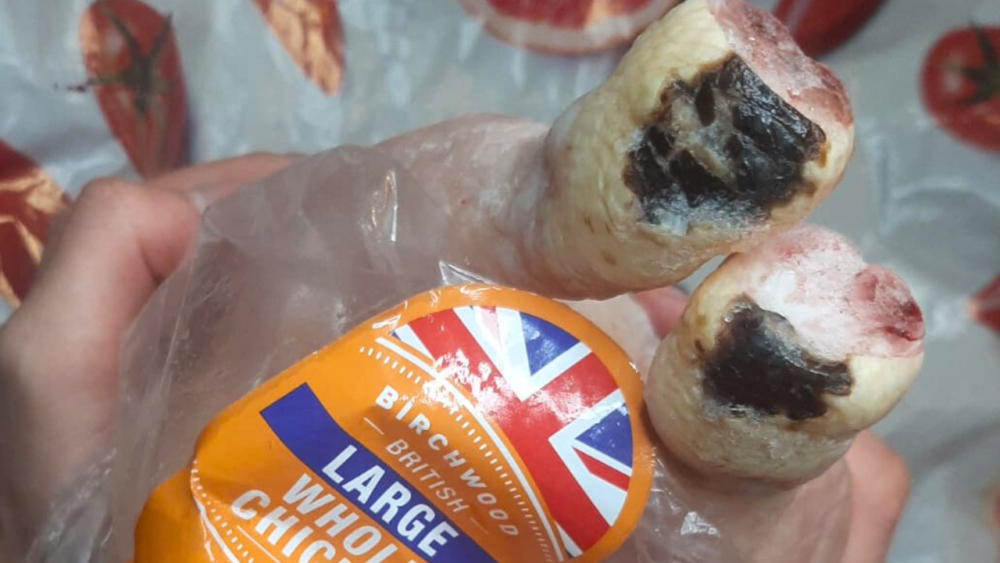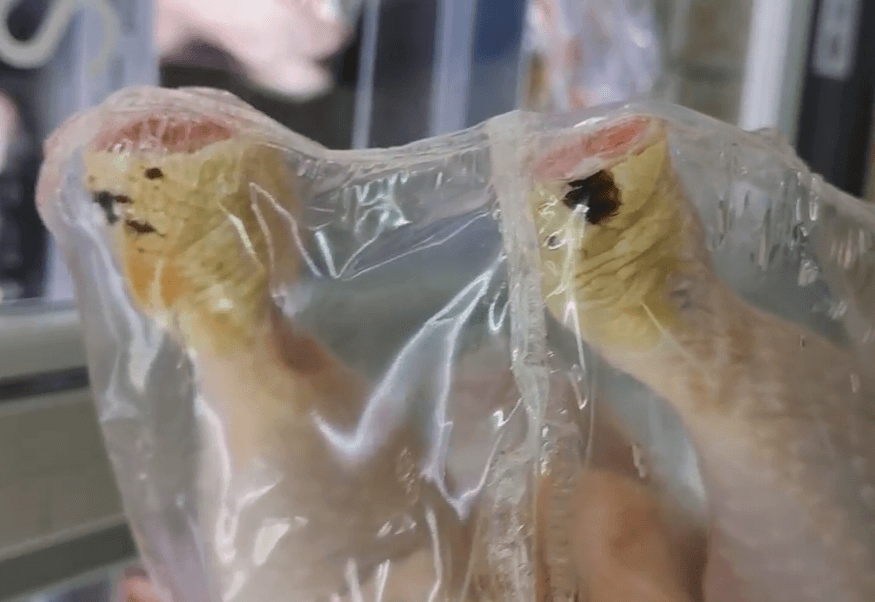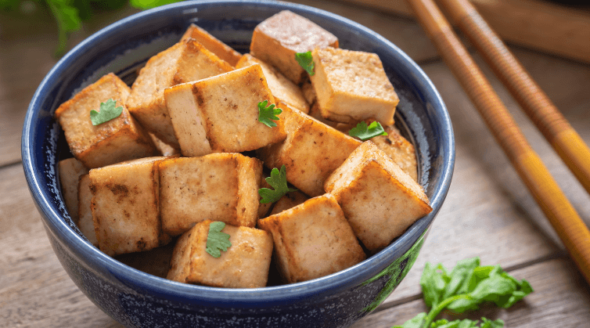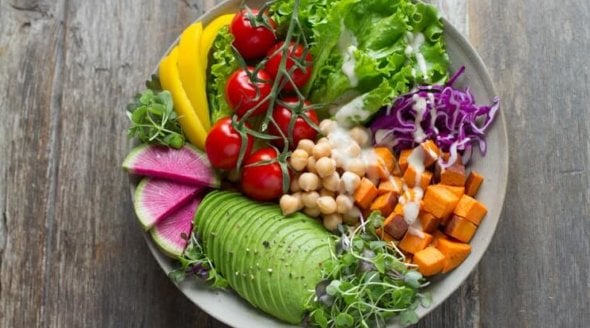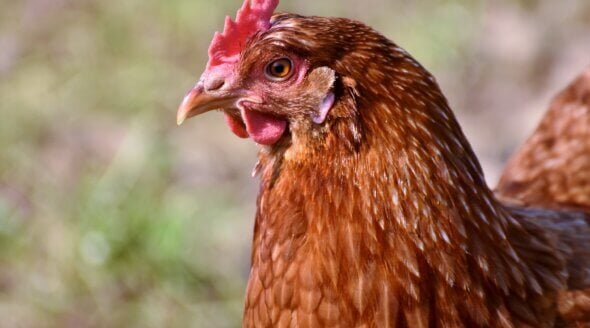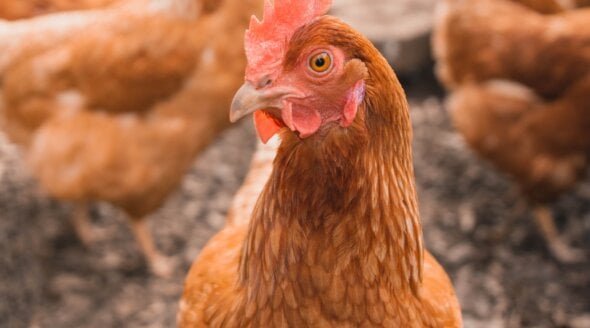Black Spots on Chicken Flesh: Hock Burn Explained
If you’re not vegan yet and still eat animals, you might have noticed black spots on chicken flesh sold in supermarkets. These marks are known as “hock burn” or “ammonia burn”, and they’re not just unsightly – they’re a symbol of the cruelty inherent in UK chicken farming.
A BBC investigation revealed that millions of slaughtered chickens developed hock burn as a result of living in their own waste. If you’re wondering what hock burn is, read on.
What Are the Black Spots on Chicken Flesh?
Hock burns are painful lesions that appear on chickens’ legs, typically where the feathers have been rubbed away, exposing the skin. These burns are caused by prolonged exposure to ammonia, which is found in the birds’ waste.
On factory farms, sheds are only cleaned once every six weeks, after one group of terrified birds is sent to an abattoir and before a new group of factory-hatched chicks arrives. In these severely crowded and filthy surroundings, the chickens cannot escape their own ammonia-filled waste.
Many birds collapse because their overly large bodies are too heavy to move around freely. Did you know that to maximise profits, farmers have selectively bred chickens to make them grow unnaturally large extremely quickly? The extra weight puts immense strain on their bodies – on some chicken farms, up to half of the birds are lame.
Unable to walk around in the packed sheds, chickens sit in waste that burns into their skin, causing painful wounds and ulcers.
Millions of Birds Suffer From Painful Ulcers
Data shows that as many as a third of chickens killed for their flesh in the UK experience these painful burns.
Co-op acknowledged that nearly 37% of its chickens show signs of the painful condition, and Open Cages found that 74% of the chicken flesh they checked in Lidl stores had hock burns. No matter where their flesh is sold, birds will always suffer when confined against their will to filthy, crowded sheds.
All Birds Suffer, Regardless of Hock Burn
Chickens are smart, social, and sensitive birds – did you know they can recognise the faces of up to 100 other chickens?
After living in hellish conditions for six weeks, the birds will be sent for slaughter. At the abattoir, they’re shackled upside down, their throats are slit, and they’re scalded in defeathering tanks – sometimes while still conscious.
Don’t be misled into believing disingenuous meat assurance schemes. Investigations repeatedly expose “high welfare” labels as nothing more than a marketing sham.
The RSPCA has endorsed dozens of farms where chickens died from dehydration and starvation.
PETA also visited RSPCA Assured farms in Cumbria, Gloucestershire, and Herefordshire that supply eggs to The Happy Egg Co, which are sold in all major supermarkets in the UK. Most of the birds on these farms were found with parts of their beaks cut off– a mutilation which can cause acute and chronic pain and, if severe, lead to persistent pain for the rest of their life. We found featherless birds with untreated wounds and the corpses of dead birds left to rot among the living.
Stop Eating Chickens
Hock burns are a painful reminder of the suffering that millions of chickens endure for a moment of taste. If you’re outraged by what you’ve read, please take personal responsibility and stop eating animals.
There’s no excuse for eating animal flesh when so many vegan protein sources are widely available. Please try going vegan for 30 days – sign our pledge and you’ll receive helpful tips and recipes along the way.

